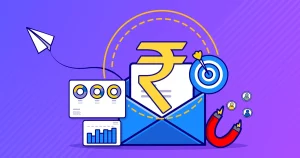A quality in-house email-marketing list is essential if you contact customers via email. But how do you put such a list together? Tim Watson of Zettasphere outlines the steps to take when building an email marketing list
- Quantify the value of an email address. If you identify how much an email address is worth to your business then you can set a budget for increasing the size of your database.
- Set objectives for building an email marketing list. Be selective: what sort of people do you want on your list? How many of them? When do you need your marketing list to be ready? Think about quality, not just quantity – a large list of the wrong people is of no value. A smaller amount of well-targeted data is of higher value.
- Never miss a chance to ask for permission to email a customer. Think of every point where you have contact with a customer and how you can add a request for email permission into the process. Customer touch points include: all contact by sales personnel, telesales, transactional emails, your website homepage, the online transaction process, in-store flyers, till receipts, exhibitions, printed correspondence, training events, conferences, direct mail, user groups, blog postings, social networking contact pages, corporate standard email signature or footer.
- Educate all client-facing staff on the purpose and value of email address collection. This is especially necessary for staff involved in data inputting processes, as they need to understand the value and need for accuracy. An email address mistyped is a lost opportunity.
- Ensure the ‘Subscribe’ form on your home page is easy to find. Don’t stick it down in the bottom right where nobody looks. Better still, include a subscription form on many or all pages, not just your homepage.
- Ask for the minimum of information at the time of sign up. Consider asking just for the email address on a first stage form and once this is given go on to ask for a few more details. But still, keep it short and avoid asking for sensitive information. The strategy should be to collect more data over time as the relationship builds.
- Explain the benefit of subscribing. What is your email value proposition? Why sign up for your emails as opposed to the thousands of other emails? Explain what you will do with the email address and give an indication of how often you will email. Consider offering user-selected email frequency – daily, weekly, monthly.
- State your privacy policy clearly. Put it right next to the submit button on our subscription form. Make your policy one of not sharing or selling the data you collect.
- Use incentives to get people to subscribe. Your mantra should be ‘free, win or save’. This could be a report about your product, a special offer or a competition entry, for example. By making the incentive related to your product or service, it will improve the relevance of your subscribers. If you offer a competition for the latest iPod and your business is antique furniture you will get people to subscribe who simply want an iPod but may not be interested in antique furniture.
- Don’t trick people into giving you permission to email them. An example would be a form of linked terms and conditions in which the fifth paragraph states that by completing the form permission is being given to receive your regular emails. It may be legal but it’s not sensible or an effective way to build a quality list.
- If you need sensitive information, explain why it’s needed. If possible, use ways to reduce the level of sensitivity. Most people are more comfortable giving an age range than a date of birth, or a salary range rather than their actual salary.
- Include use of a ‘recommend a friend’ process in your e-marketing. Offering an incentive to both the recommender and their friend will increase its use.
- Use viral campaigns. A viral campaign is an email campaign made up of a quick fun activity, such as an online game or other types of entertainment. They should always feature an easy way for someone to forward their game score to a friend. Once again, an incentive will help the spread of your email.
- Avoid third-party data. This is typical of low quality and can harm your reputation and reduce the number of emails successfully delivered.
- Don’t be aggressive when asking for permission to email. For example, don’t use a pop-up window the moment someone hits your home page. People will need to read something about you before they will consider giving an email address.
Learn More about email marketing with Google Digital Unlocked Videos



